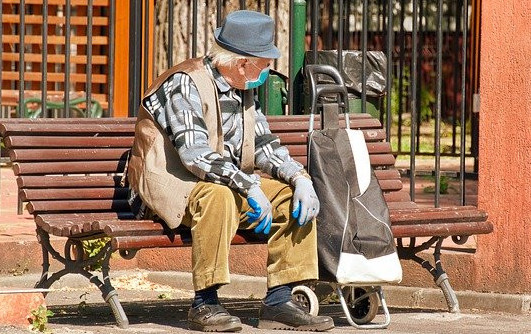
Health officials are advising all of us to stay home to reduce the risk of infection from the corona pandemic. This is most important to the elderly since statistics show that we are the most vulnerable group. Since we will be spending more time at home, now it is more important than ever to have clean air indoors. We will discuss two key elements for keeping our indoor air safe.
– AIR CLEANERS
– VENTILATION
What the Scientists tell us
The World Health Organization (WHO) reports that ” according to current evidence, COVID-19 virus is primarily transmitted between people through respiratory droplets and contact routes ” [1].
These droplets are particles between 5 and 10 microns. ( 1 micron = .000001 m )
– AIR CLEANERS
Air cleaners with HEPA filters can remove particles larger than .3 microns. Therefore, it appears that Air Cleaners with HEPA filters could provide a virus free air environment. It has been noted that the size of the COVID-19 virus is only .12 microns and therefore it could not be removed with the HEPA filters. However, the virus in the air would normally be attached to a dust particle with total particle size greater than .3 microns. So it is probable that Air Cleaners, with HEPA filters , can be of help in our fight against this pandemic. [2]
– VENTILATION
Notwithstanding the report of the WHO, recent studies show that the virus could, under special conditions, remain in the air in aerosol form. These ultra small particles are the most dangerous to our health since they can easily penetrate our lungs and blood vessels. Another tool in our arsenal against the pandemic is simply ventilation that would remove the aerosol particles present in indoor air.
In hospitals, room ventilation will clear aerosols from the air fairly quickly. Studies show that one air exchange removes approximately 63% of the viral load present in the air. After five air exchanges the viral load is only less than 1% of the original load. Ventilation standards in England Hospitals require six air exchanges per hour. Five air exchanges would take 50 minutes. Therefore, 99% of any new viral load introduced in a hospital room would be removed within 50 minutes.[3]
Of course in our homes the ventilation is typically lower. The typical air change rates measured in US homes range from .5 to 2.2 air exchanges per hour.[4]
As an example a ventilation rate of 2 exchanges per hour would remove any new viral load in 150 minutes.
Conclusion
Since the COVID-19 virus is a new virus still being studied we do not know for certain all the modes of transmission. According to the WHO it is primarily transmitted through respiratory droplets and surface contact. However, there is some empirical evidence that it could also be transmitted in aerosol form in which case the virus could be floating in air for extended periods of time. To be safe we can assume that this mode of transmission may also occur.
Therefore, to maintain clean and healthy indoor air we should install Air Cleaners with HEPA Filters and also upgrade our ventilation systems if possible.

Carlos
References
[1] World Health Organization – Modes of Transmission of virus causing COVID-19 ; implication for IPC precaution recommendations. 29 March 2020
[2] https://improvingindoorairquality.com/healthrisks
[3] T.M. Cook – Personal protective equipment during the corona virus disease (COVID)2019 pandemic- a narrative review- 04 April 2020. https://doi.org/10.1111/anae.15071
[4] https://improvingindoorairquality.com/ventilation